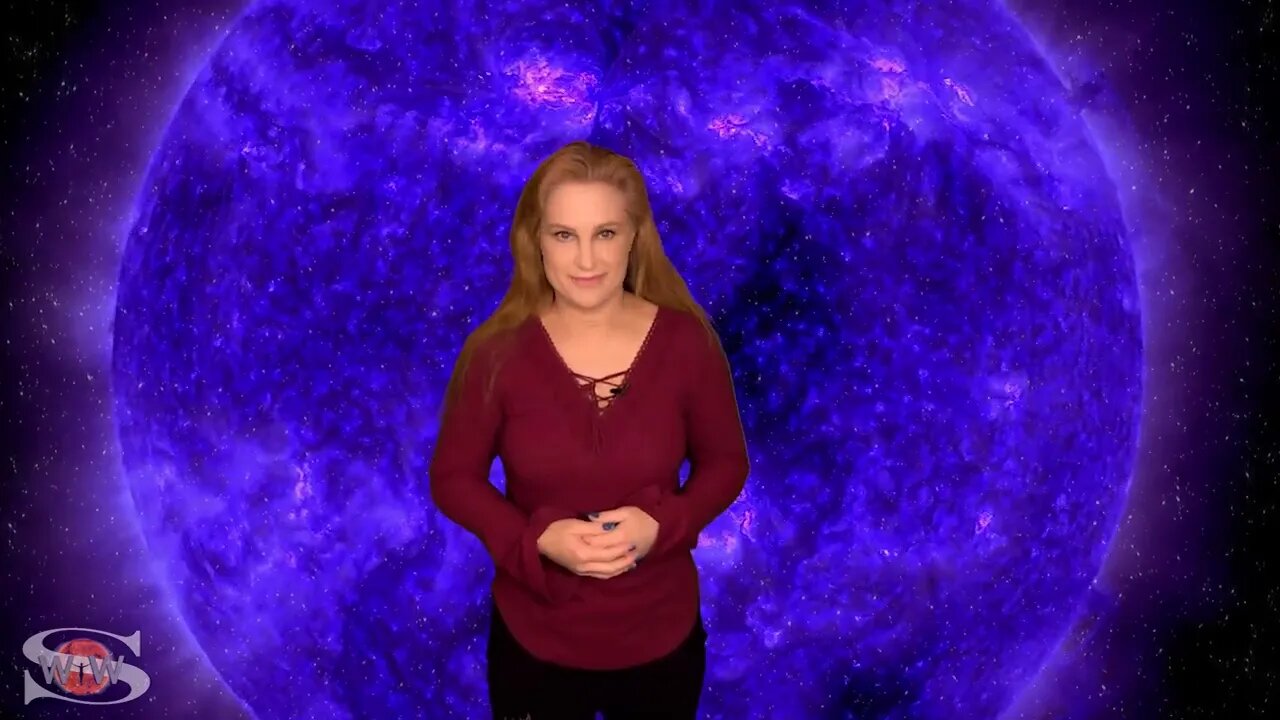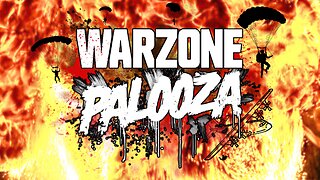Premium Only Content

Radio Blackouts with Radiation Storms & 1,2-Punch | Space Weather News: 27 February 2023
This Space Weather News forecast sponsored in part by Millersville University:
https://www.millersville.edu/swen
We are feeling the impact of the first of two solar storms in what will be a 1,2-punch over the next few days. This first storm is already lighting up the skies with aurora in the UK and as of this writing we are beginning to see aurora as far south in the USA in places like Massachusetts and New York. Aurora photographers should take advantage of this opportunity as views should be plentiful and bright even deep into mid-latitudes. Amateur radio operators and GPS users, however, are dealing with less than optimal conditions. Radio blackouts up to an R2-level are likely, which means signal reception could be poor. In addition, we also have an ongoing solar radiation storm, which affects radio communications and navigation at high latitudes. Airline pilots and high-risk passengers should also take the radiation storm conditions into consideration when making flight plans as the conditions could remain at elevated levels through the end of the week. Learn the details of the 1,2-solar storm punch, find out when and where aurora may be visible, and see what else the Sun has in store this week.
Want early access to these forecasts, tutorials on Space Weather, & more? Visit:
https://patreon.com/SpaceweatherWoman
For daily and often hourly updates (during active times) visit me on Twitter:
https://twitter.com/TamithaSkov
For a more in-depth look at the data and images highlighted in this video see these links below.
Solar Imaging and Analysis:
SDO: http://sdo.gsfc.nasa.gov/data/
Helioviewer: http://www.helioviewer.org/
Flare Analysis: http://www.lmsal.com/solarsoft/latest_events/
Computer Aided CME Tracking CACTUS: http://www.sidc.oma.be/cactus/out/latestCMEs.html
GOES Xray: http://www.swpc.noaa.gov/rt_plots/xray_1m.html
SOHO: http://sohodata.nascom.nasa.gov/
Stereo: http://stereo.gsfc.nasa.gov/
GONG magnetic field synoptic movie: https://gong.nso.edu/data/magmap/standard_movie.html
GONG magnetic field synoptic charts: http://gong.nso.edu/data/magmap/
LMSAL Heliophysics Events HEK http://www.lmsal.com/isolsearch
Solar Wind:
DISCOVR solar wind: http://www.swpc.noaa.gov/products/real-time-solar-wind
ACE Solar Wind: http://www.swpc.noaa.gov/products/ace-real-time-solar-wind
NASA ENLIL SPIRAL: https://iswa.gsfc.nasa.gov/IswaSystemWebApp/iSWACygnetStreamer?timestamp=2038-01-23+00%3A44%3A00&window=-1&cygnetId=261
NOAA ENLIL SPIRAL: http://www.swpc.noaa.gov/products/wsa-enlil-solar-wind-prediction
Magnetosphere, Ionosphere, Atmosphere:
GOES Magnetometer: http://www.swpc.noaa.gov/products/goes-magnetometer
Ionosphere D-Region Absorption (DRAP) model: http://www.swpc.noaa.gov/products/d-region-absorption-predictions-d-rap/
Radio Propagation: https://www.tvcomm.co.uk/g7izu/atlantic-mf-hf-propagation-20min-persistence/
Near-Earth radiation environment: https://spaceweather.gfz-potsdam.de/products-data/forecasts
Auroral Oval Ovation Products: http://www.swpc.noaa.gov/products/aurora-30-minute-forecast
Global 3-hr Kp index: http://www.swpc.noaa.gov/products/planetary-k-index
GEOCHRON Weather Display: www.geochron.com
USGS Ground Magnetometers: http://geomag.usgs.gov/realtime/
USGS Disturbance Storm-Time (Dst): http://geomag.usgs.gov/realtime/dst/
NAIRAS Radiation Storm Model: http://sol.spacenvironment.net/raps_ops/current_files/globeView.html
Multi-Purpose Space Environment Sites:
NOAA/SWPC: http://www.swpc.noaa.gov
SOLARHAM: http://www.solarham.net/index.htm
Spaceweather: http://spaceweather.com
iSWA: http://iswa.gsfc.nasa.gov/iswa/iSWA.html
Definition of Geomagnetic Storm, Radiation Storm, and Radio Blackout Levels:
http://www.swpc.noaa.gov/NOAAscales/
None of this would be possible without the hard work and dedication of those who have provided all of this data for public use.
Images c/o NASA/ESA/CSA (most notably the superb SDO, SOHO, ACE, STEREO, CCMC, JPL & DSN teams, amazing professionals, hobbyists, institutions, organizations, agencies and amateurs such as those at the USAF/HAARP, NICT, NOAA, USGS, Environment Canada, Natural Resources Canada, Intellicast, Catatania, rice.edu, wisc.edu, sonoma.edu ucalgary.ca, rssi.ru, ohio-state.edu, solen.info, and more. Thanks for making Space Weather part of our every day dialogue.
-
 9:46
9:46
Dr. Tamitha Skov
1 year ago $0.02 earnedDark Farside Regions Come with Aurora & Meteors for New Years | Space Weather News 30 December 2023
2011 -
 LIVE
LIVE
Rallied
3 hours ago $1.16 earnedSolo Challenges ALL DAY
232 watching -
 2:26:32
2:26:32
BooniesHQ
2 hours agoGame Of SKATE Shaun Hover Vs. Jeff DeChesare: Boonies Skate Night 1
53K1 -
 17:08
17:08
Exploring With Nug
22 hours ago $0.53 earnedMassive Thunderstorm Hits During Search for Missing Georgia Woman!
2.35K -
 LIVE
LIVE
Sgt Wilky Plays
50 minutes agoRumble Gaming Bad Company Presents WARZONEPALOOZA
66 watching -
![Devin Nunes - Devin Nunes Reveals The Document The [DS] Was Looking For Was Hidden,Truth Is Coming](https://1a-1791.com/video/fww1/20/s8/1/-/e/L/d/-eLdz.0kob-small-Devin-Nunes-Devin-Nunes-Rev.jpg) 1:17:44
1:17:44
X22 Report
7 hours agoDevin Nunes - Devin Nunes Reveals The Document The [DS] Was Looking For Was Hidden,Truth Is Coming
99K84 -
 LIVE
LIVE
GritsGG
7 hours agoRumble Customs! 3515 Ws! 🫡!
170 watching -
 LIVE
LIVE
BigTallRedneck
3 hours agoREDD CONQUERS WARZONEPALOOZA
19 watching -
![[LIVE] WARZONEPALOOZA | Team: Helljumpers | #RumbleGaming #RumbleTakeover](https://1a-1791.com/video/fww1/a8/s8/1/G/N/O/d/GNOdz.0kob-small-LIVE-WARZONEPALOOZA-Team-He.jpg) LIVE
LIVE
Joke65
2 hours ago[LIVE] WARZONEPALOOZA | Team: Helljumpers | #RumbleGaming #RumbleTakeover
10 watching -
 LIVE
LIVE
Illyes Jr Gaming
6 hours agoIt's WARZONEPALOOZA!
28 watching